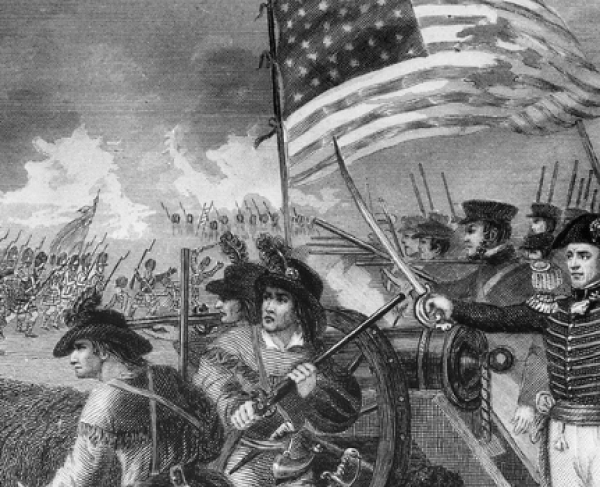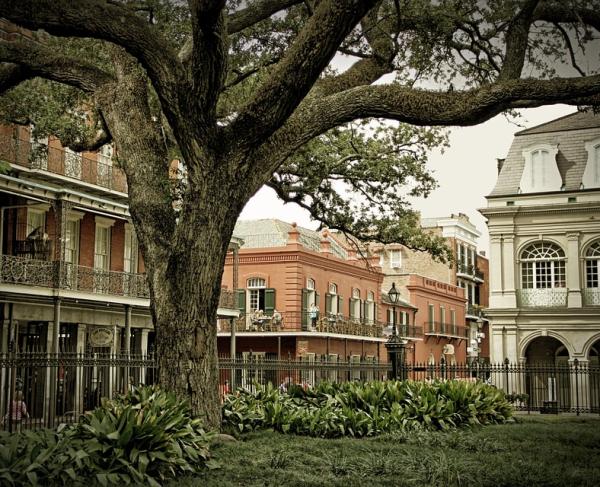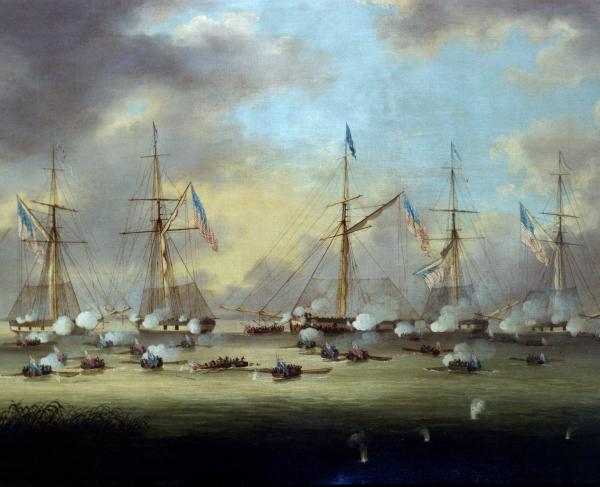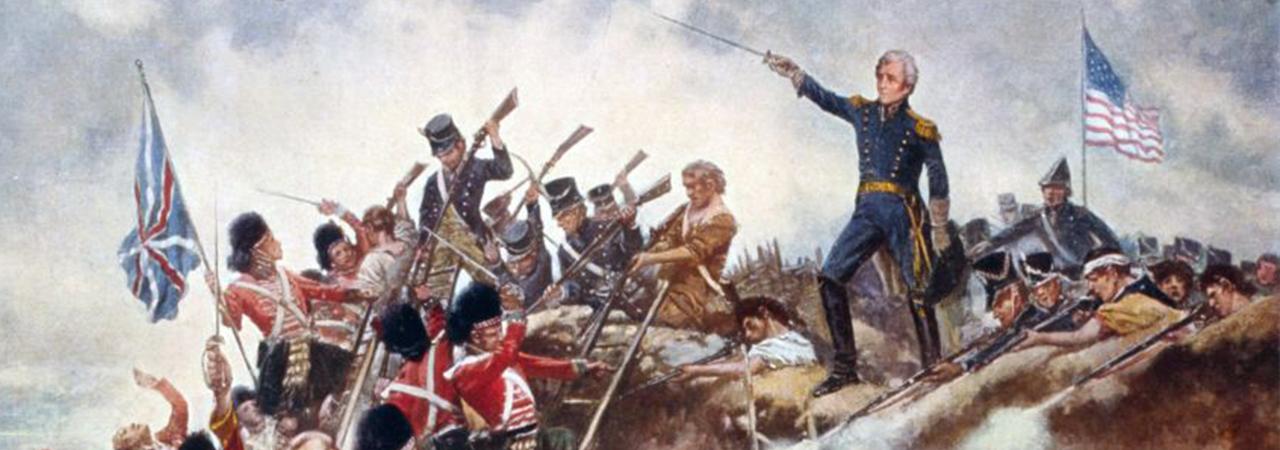
In the spring of 1783, in the cool confines of a modest brick house in upstate New York, 28-year-old Colonel Alexander Hamilton called a once-undreamed of meeting to order. After eight years of desperate toil for independence, the officers of the Continental Army were preparing to transition back to their civilian lives. As their fighting force was demobilized, they pledged not to forget the bonds blood had forged among them, nor should they allow others to forget the blood that had ensured independence. Those assembled vowed to convert their temporary military service to permanent civic service, to form the backbone of a peaceful nation.
Their values were articulated in the name chosen for the new brotherhood: The Society of the Cincinnati. The moniker was inspired by Lucius Quinctius Cincinnatus, the Roman warrior-dictator who had freely abdicated his near-absolute authority and returned to his humble plow and hearth when the appointed task was fulfilled.
The Society was the brainchild of Bostonian Henry Knox, George Washington’s chief of artillery. Before his heroic wartime service, there had been little to suggest that this self-educated, street-tough militiaman and shopkeep — who had nearly blown his own hand off with a shotgun — would become one of the nation’s most extraordinary heroes. But Knox had certainly earned his distinction as the youngest major general in America and his place in Washington’s refined retinue.
Creating balance between the martial and civic spheres is a defining feature of the American experiment. More than any other form of government, a representative democracy must rely on “citizen-soldiers” to ensure its liberty and security.
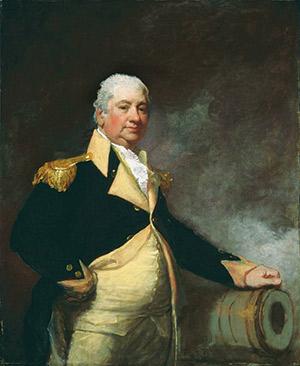
In the colonial era, local militias were a natural feature of nearly every community. Farmers, tradesmen and clerks gathered several times a month to prepare for the worst. These ad hoc and often boisterous fraternal societies unified the citizenry and enriched civic society.
Training days were attended by more than just the able-bodied men. They were sometimes scheduled to comport with public construction projects, and the structures would be built after or as part of the day’s drill. Women prepared huge picnics, as platoons of children scampered about the green and chaplains served as moral chaperones. Everywhere they looked, the militiamen could see what they had vowed to defend. In the words of Massachusetts Reverend Simeon Howard in 1773:
A people may…shamefully suffer the sword to rust in its scabbard, when it ought to be employed in defending their liberty…. A safer way…is to have the power of defense in the body of the people, to have a well-regulated and well-disciplined militia. This is placing the sword in hands that will not be likely to betray their trust, and who will have the strongest motives to act their part well, in defense of their country, whenever they shall be called for.
In the years before the Revolution, militiamen very rarely saw combat. Some served in the French and Indian War or skirmished with Native Americans, but in large part the militia served a role more civic than soldierly.
The tumult of the 1770s and the eventual outbreak of all-out war dramatically shifted that balance. The British onslaught did not accommodate monthly schedules or picnics. Most militiamen struggled to adjust to the savage tempo and to the horrors and pressures of the battlefield. “For instead of being the best marksmen in the world, and picking off every Regular that was to be seen,” remarked American loyalist fighter Benjamin Thompson, “the continual fire which they kept up by the week and month together has had no other effect than to waste their ammunition and convince the King’s troops that they are not really so formidable….”
Following the opening clashes of the Revolutionary War, Congress established the formal Continental Army, in which nearly 30,000 Americans would enlist by the end of the decade. This voluntary service contrasted greatly to the compulsory militia activity that had been instituted by the British government in colonial America, and it created a much more disciplined and professional fighting force. State militias still persisted throughout the war and were called upon to augment the principle army on numerous occasions.
Despite frequent failure, American citizen-soldiers did enjoy some remarkable success early in the war. The Minute Men’s stubborn and unconventional defense of Lexington and Concord proved disastrous for the British regulars who had to run their gauntlet of fire through the countryside. Perhaps even more significant, the Siege of Boston — George Washington’s first operational victory — was spearheaded by an impromptu flood of enraged militia from the surrounding areas that bottled up the British inside the city within a matter of hours. Throughout New York and New Jersey, American militia proved invaluable in guerrilla actions that, while not turning back the British invaders in themselves, ensured that the redcoats reached the major battles undersupplied and overtired.
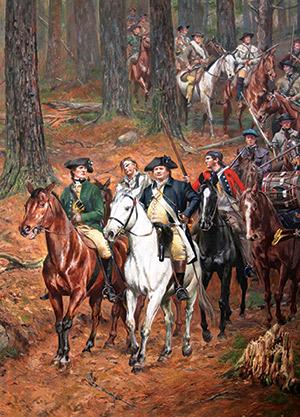
As the war continued, militias evolved. American commanders, particularly in the South, learned that the best way to employ these irregular but passionate fighters was with great latitude. At the Battle of Kings Mountain in October 1780, the militiamen were told to surround the hill and at the sound of gunfire to “make your way up the best you can.” At Cowpens, three months later, they served as a skirmishing force that disorganized the steady British advance. Throughout South Carolina, they struck lightly protected outposts and ambushed passing columns. When finally brought to heel at Yorktown, Lord Cornwallis reported:
I will not say much in praise of the Militia of the Southern Colonies, but the list of British officers and Soldiers killed or wounded by them since last June, proves but too fatally that they are not wholly contemptible.
A French observer, as yet unaware of the civil uprising his own nation would experience, was inspired by the American citizen-soldier, commenting:
He arises, leaves his fireside … he will terrify, with his vengeance, any people who may be tempted to trouble his repose … he will carry flame and fire to the enemy… he will perish, in the end, if necessary; but he will obtain satisfaction, he will avenge himself, he will assure himself, by the magnificence of this vengeance, of his future tranquility.
The struggle had a profoundly unifying effect, creating both a shared national mythology and a shared battle-bond. In 1838, Abraham Lincoln remarked on the meaning of the conflict:
At the close of that struggle, nearly every adult male had been a participator in some of its scenes. The consequence was, that of those scenes, in the form of a husband, a father, a son or a brother, a living history was to be found in every family — a history bearing the indubitable testimonies of its own authenticity, in the limbs mangled, in the scars of wounds received, in the midst of the very scenes related — a history, too, that could be read and understood alike by all, the wise and the ignorant, the learned and the unlearned.
After the war, the militia mostly disbanded as the nascent American government debated the role of the military in a democratic society. Less than five years after Yorktown, there were fewer than 700 men in the United States Army. This number increased to 4,000 to deal with uprisings like Shay’s Rebellion and the Whiskey Rebellion — the counter-revolutions and aftershocks that are inevitable in such times —as well as conflict with Native American tribes and the looming threat of war with France, but decreased again when Thomas Jefferson assumed the role of Commander-in-Chief.
The War of 1812 demonstrated an essential feature of citizen-soldiers — they make poor tools of imperial power. With only a token professional force, the war effort demanded an influx of militia fighters. However, many Americans — even those elected to Congress — viewed the war as inherently expansionist and unnecessary.
This democratic struggle reverberated in the military. Many militia outfits refused to answer the call to arms. Others answered, but refused to take offensive action. Commitment to an underlying cause, an element so crucial to success in the Revolution, was extremely low. At Bladensburg, Md., the militia fled the field almost immediately, even though the American capital was at stake.
There were limited bright spots for American citizen-soldiers in the war, and only a few recognizable heroes emerged. At Havre de Grace, Md., a British flotilla of more than a dozen warships attacked an American battery held by fewer than 40 militiamen. The ships fired rockets broadside into the town, projectiles hissing and screaming above and among the frightened defenders. Many Americans fled, but citizen-soldier John O’Neill remained at the battery, single-handedly loading and firing the heaviest gun until the massive tube flew back and nearly broke his hip, driving him to the ground. The British burned the town, but they quickly released O’Neill out of respect for his bravery, although the exact details of the exchange have been lost to colorful legend.
The most notable action of citizen-soldiers in the war was at the Battle of New Orleans in 1815. Learning that a British invasion force was headed for the Gulf Coast, Maj. Gen. Andrew Jackson — a teenage courier during the Revolution who went on to become a representative and senator from the new state of Tennessee, as well as a ranking commander of its militia — scrambled to assemble a defensive force. These men were far more citizen than soldier, a polyglot collection of hardscrabble men who should have stood no chance against British veterans. Under Jackson’s inspired leadership, however, and in the face of contemptuous British, these men turned in one of America’s most dazzling combat performances, decimating their foes as they made repeated attempts to capture the city, and suffering fewer than 20 casualties themselves. Here, in some way, was a truly democratic battle — an army of innocents and equals united by necessity and spurred to victory by hometown pride.
After the Treaty of Ghent was signed, the United States government again began a process of frantic demobilization. Hundreds of thousands of militiamen were sent home; as regular troops were disbanded, it did not take long before the United States Army consisted of fewer than 16,000 men, less than half its wartime size.
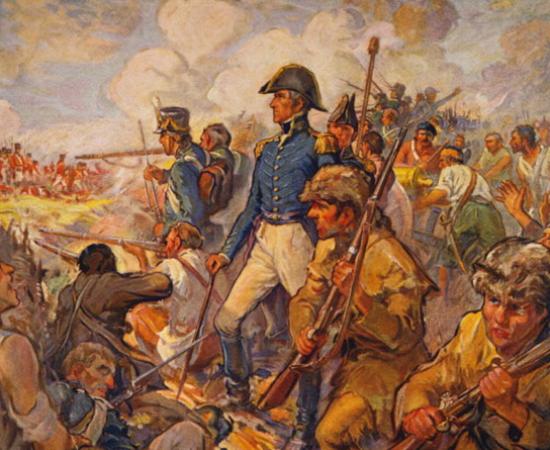
In the years that followed, the schisms that had frustrated the 1812 war effort continued to grow. North and South tore further and further apart, divided by debates of commerce, international relations and slavery. Perhaps disunion and armed conflict was inevitable, perhaps not. But it came nonetheless.
The citizen-soldier is at his best when protecting, preserving and defending. In the Civil War, both sides believed they were doing just that.
Northern volunteers left their farms and shops behind to preserve the Union. One man called it “the beacon light of liberty & freedom for the human race,” without which “all the hope and confidence of the world in the capacity of men for self-government will be lost.”
Southern volunteers signed on to defend their homes and institutions. Confederate James Patton declared that the “wrongs complained of by our revolutionary fathers,” seemed trifling when measured against “the terrible system of oppression instituted by the Yankees.”
In most cases, neither side viewed their cause as imperial or unjust. Service was right and necessary. Later in the war, drafts were instituted by both sides, but the fundamental citizen-soldier basis of the armies remained unchanged.
As in the Revolution, motivating volunteer soldiers required a different set of skills than commanding professionals. Citizen-soldiers operated most effectively when driven by passion, fury and fidelity. Thus, the officer corps on both sides changed drastically as the war continued. Cool and remote professional officers often struggled to control their volunteers, and many were replaced by politicians, zealots and men raised from the ranks.
The journey of black soldiers, many of whom took up the rifle and bayonet in order to become citizens, is particularly poignant and illustrative. In the words of Frederick Douglass, “let the black man get upon his person the brass letters U.S., let him get an eagle on his button, and a musket on his shoulder and bullets in his pockets, and there is no power on earth which can deny that he has earned the right of citizenship in the United States.” Their service is emblematic of the citizen-soldier, for whom investment in and enjoyment of democratic society is counter-balanced by the commitment of life and limb in its defense.
The United States military is currently an all-volunteer force, an organization of men and women who carry the mantle of both citizen and soldier. Maintaining this equilibrium is essential to the perpetuation of representative democracy. One commitment cannot outweigh the other. The soldier must always be prepared to return to his home; the farmer must always be prepared to become a soldier. As John F. Kennedy declared:
We need a nation of minute men, citizens who are not only prepared to take arms but citizens who regard the preservation of freedom as the basic purpose of their daily life and who are willing to consciously work and sacrifice for that freedom.
Related Battles
93
300
389
8,589
62
2,034

